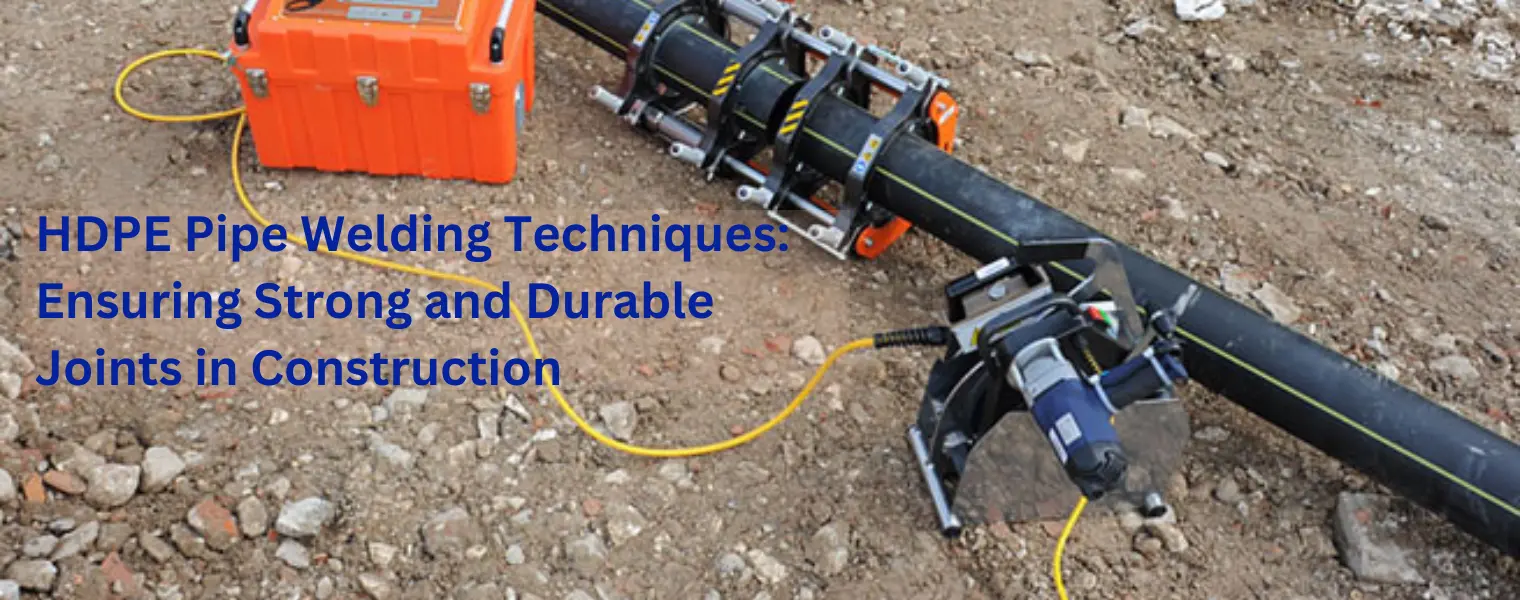
In the realm of construction, the strength and reliability of joints in piping systems are paramount. High-Density Polyethylene (HDPE) pipes have become a staple in the industry, and their welding techniques play a crucial role in ensuring the creation of robust and durable joints. This blog explores the various HDPE pipe welding techniques that contribute to the integrity of construction projects and the longevity of piping systems.
Welding is the key process that seamlessly integrates individual HDPE pipe segments, creating a joint that is as strong and durable as the pipe itself. The quality of the weld directly impacts the overall reliability of the piping system.
Butt fusion welding is the cornerstone technique for joining HDPE pipes. In this method, the ends of two pipes are heated and melted using a specialized machine, and then they are fused together to form a single, continuous pipe. This technique ensures a leak-proof and structurally sound joint.
Electrofusion welding involves the use of specially designed fittings with embedded heating elements. When an electric current is applied, the fittings melt and fuse with the pipe, creating a secure joint. Electrofusion welding is commonly used for joining pipes of different sizes and in challenging locations.
Fusion welding produces joints that are nearly indistinguishable from the rest of the pipe. This seamless integration eliminates weak points in the system, reducing the risk of leaks and ensuring uniform strength.
Fusion welding ensures that the material properties of the joint remain consistent with the original pipe material. This uniformity is crucial for maintaining the structural integrity of the entire piping system.
The success of HDPE pipe welding heavily relies on the expertise of the operator. Skilled operators with a deep understanding of the welding process and the nuances of HDPE properties contribute to the precision required for creating strong and durable joints.
HDPE pipes. welding techniques find application in a wide array of construction projects, including water supply systems, sewage and drainage networks, gas distribution, industrial pipelines, and more. The adaptability of these techniques makes HDPE pipes suitable for diverse engineering challenges.
Reliable HDPE pipe manufacturers implement stringent quality checks during the welding process. These checks ensure that each joint meets industry standards, guaranteeing the overall quality and longevity of the piping system.
HDPE pipe welding techniques are the linchpin in constructing reliable, leak-proof joints that stand the test of time. Whether through butt fusion welding or electrofusion welding, the seamless integration of HDPE pipes ensures a robust and durable piping system. As construction projects increasingly rely on HDPE pipes for their numerous advantages, mastering and implementing these welding techniques become imperative. The expertise and precision involved in HDPE pipe welding contribute not only to the strength of joints but also to the overall success of construction endeavors. Polyfab Polyfab distinguishes itself in the industry by showcasing expertise and unwavering commitment to excellence. We provide HDPE pipes renowned for delivering dependable performance across a spectrum of applications. Reach out to us and make a wise choice for generations of reliable plumbing.